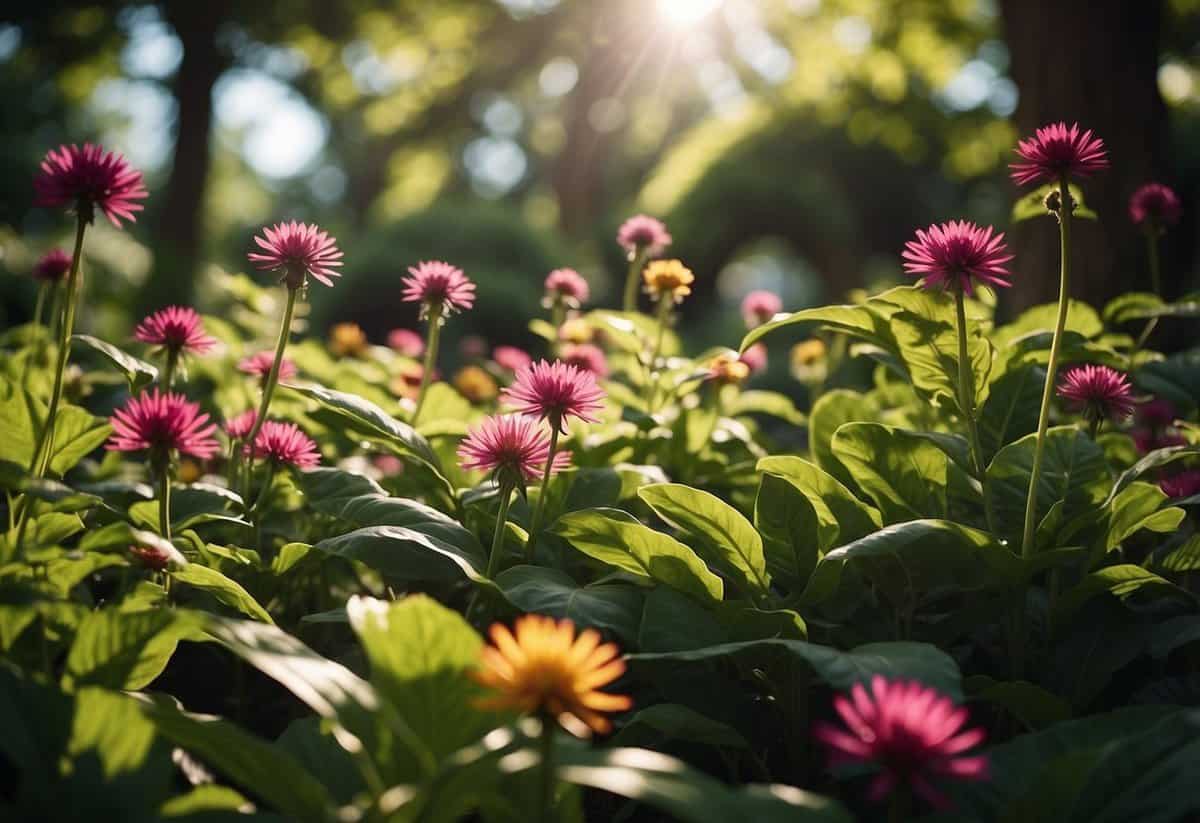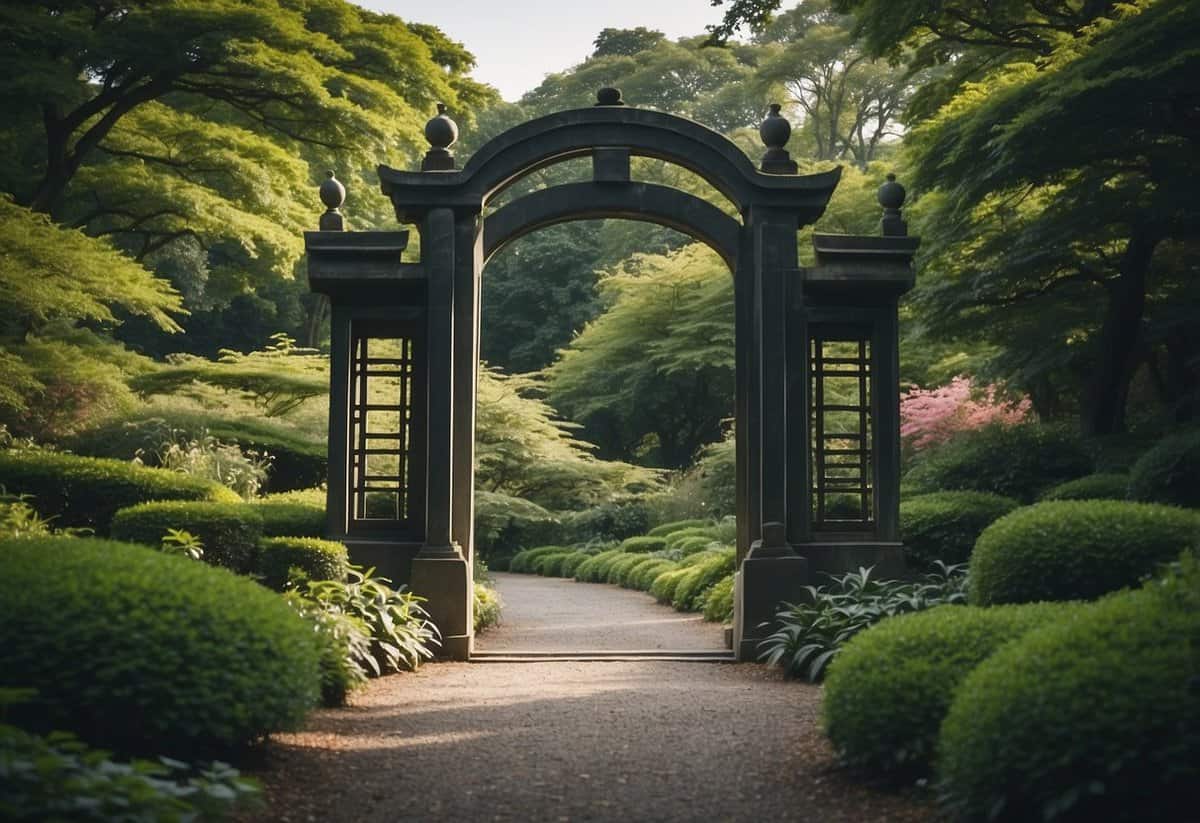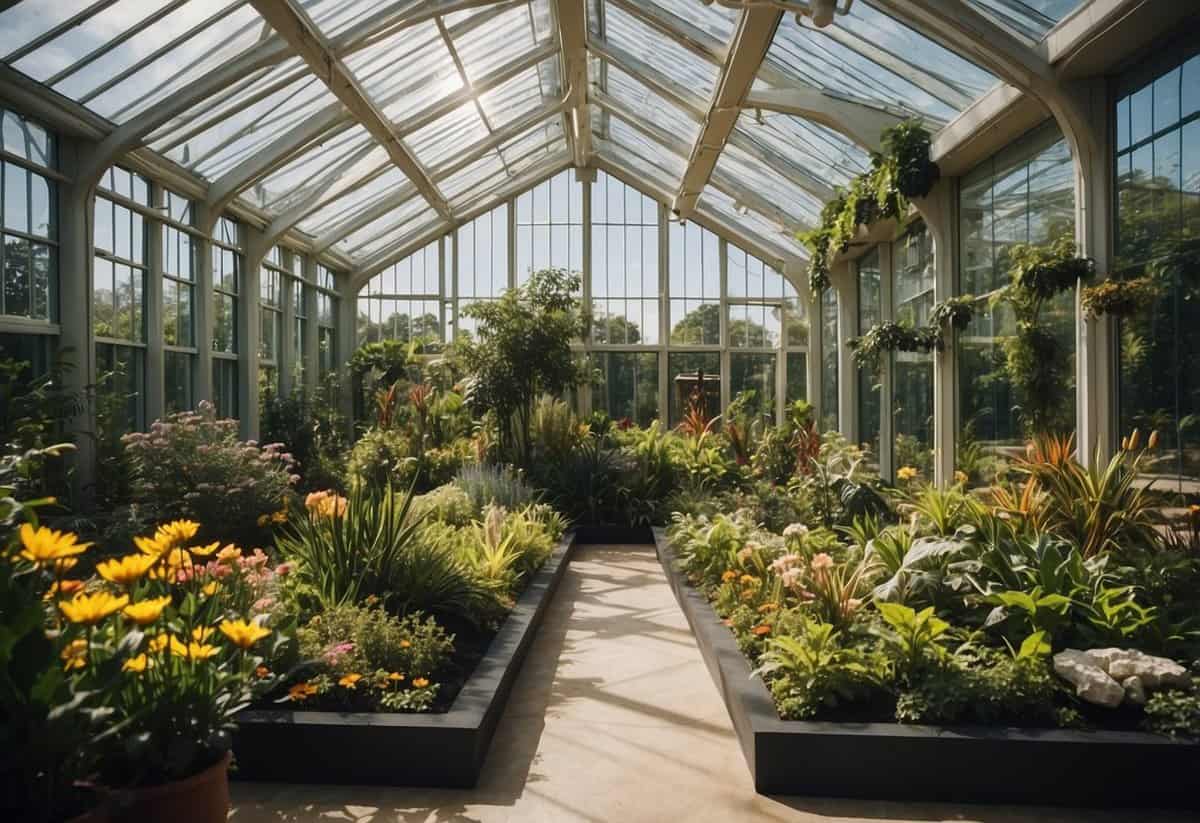Kew Gardens Tips: Insider Advice for a Perfect Visit
Visiting Kew Gardens in London can be a delightful experience for nature lovers, families, and anyone interested in botanical beauty. As one of the most renowned botanical gardens in the world, Kew Gardens offers a wide variety of plants, historic greenhouses, and picturesque landscapes that can captivate your senses.

Planning your visit with the right tips can make your experience even more enjoyable. Whether you’re interested in the seasonal blooms or looking for the best spots to relax and take in the scenery, having a well-thought-out plan will help you make the most of your trip to this UNESCO World Heritage Site.
1) Visit Palm House

When you visit Kew Gardens, make sure to see the Palm House. This beautiful iron and glass structure was built in the 1840s and looks like a giant greenhouse.
Inside, you’ll find an amazing collection of tropical plants, making it feel like an indoor rainforest. The environment is hot and humid, perfect for these plants to thrive.
You can walk all around the inside, even up high on a walkway. It’s a bit like being in a tropical jungle, but without leaving London. For more details, check out the Palm House.
2) Explore Treetop Walkway

Take a walk on the Treetop Walkway at Kew Gardens. This amazing structure is 18 meters above the ground. It gives you a chance to see the gardens from a new angle.
Enjoy the views of the garden’s trees and wildlife. You’ll be up close with birds and insects. Look for lichen and fungi too.
The walkway is a great way to experience the natural beauty of Kew Gardens. Don’t forget your camera—you’ll want to capture these moments! For more details, check out the Treetop Walkway.
3) Check out the Waterlily House

Make sure to visit the Waterlily House at Kew Gardens. This charming glasshouse has a pond filled with beautiful waterlilies, lotus, ferns, and papyrus. The highlight is the giant Victoria boliviana, with lily pads that can grow up to three meters wide.
The Waterlily House is the hottest and most humid spot in the gardens. With temperatures maintained at a minimum of 20°C, it can heat up quickly, especially on sunny days. The glasshouse is small, covering 225 square meters, making your visit both cozy and fascinating.
4) Don’t miss the Princess of Wales Conservatory

The Princess of Wales Conservatory is a must-see at Kew Gardens. This glass wonderland features ten different climate zones, making you feel like you’ve traveled from the deserts to the tropics.
Explore the section dedicated to carnivorous plants. Here, you’ll learn about fascinating species like the Venus flytrap, which catches and eats insects.
Make sure to visit the section with giant waterlilies and spiky cacti. It’s like stepping into a different world with each turn. Don’t forget to check out the fascinating architectural design and the rich history behind it.
5) Relax at the Japanese Gateway

The Japanese Gateway at Kew Gardens, also known as Chokushi-Mon, is a tranquil spot. This near replica of Kyoto’s Gate of Nishi Hongan-ji transports you to a peaceful world.
Walk around the well-manicured gardens and listen to the gentle rustle of leaves. The serene atmosphere provides a perfect escape from daily stress.
Admire the detailed architecture and the beautiful setting. Take a moment to sit and breathe in the calm surroundings. This is a great place to relax and rejuvenate.
6) See the Temperate House

The Temperate House at Kew Gardens is a must-see. It houses over 50,000 different plant species.
Designed by Decimus Burton, it first opened in 1863. The house took several decades to complete.
The glasshouse is perfect for plants that can’t handle freezing temperatures. Explore its historic architecture and enjoy the lush environment.
Take a 360° virtual tour for a fun experience!
7) Wander through the Rhododendron Dell

Take a relaxing stroll through the Rhododendron Dell at Kew Gardens. This hidden gem is filled with vibrant rhododendrons, including unique hybrids you won’t find anywhere else.
Enjoy the colorful blooms and the peaceful atmosphere. The winding woodchip paths lead you through beautiful clusters of flowers, making it a perfect spot for a tranquil walk.
8) Stroll around the Rock Garden

The Rock Garden at Kew is a must-see. It’s over an acre in size and feels like a tiny mountain range.
Sandstone peaks rise up, and waterfalls cascade down, creating a peaceful atmosphere.
Originally built in 1882, this garden is one of the oldest and largest rock gardens in the world. It’s perfect for leisurely walks and photos. Explore and enjoy the diverse plant life that thrives in this unique setting at Kew Gardens.
9) Discover the Evolution House

The Evolution House at Kew Gardens is a fascinating spot to visit. It showcases the story of plant evolution, highlighting how plants have adapted over millions of years.
As you walk through, you’ll see different plant groups displayed in “rooms” that represent various evolutionary stages. This makes it easy to understand the incredible history and diversity of plant life.
Make sure to check out the unique plant family connections that recent DNA analysis has uncovered. This attraction is perfect for anyone interested in science or horticulture. For more details, visit the Agius Evolution Garden page.
10) Visit the Kew Palace

Kew Palace is the tiniest royal palace in the UK, located within the Kew Gardens. You can explore this historical gem and get a glimpse into royal family life from centuries ago.
For ticketing and more information, visit the Kew Palace page. After your visit, enjoy the beautiful surroundings and continue your adventure in the vast gardens.
Best Times to Visit

To make the most of your trip to Kew Gardens, time your visit according to the best seasons and tips for avoiding large crowds. This way, you can enjoy the stunning landscapes and attractions at their peak.
Seasonal Tips
Spring (April to May): Spring is a wonderful time to visit Kew Gardens. Flowers begin to bloom, and everything starts to look vibrant. The garden’s flora collections are at their most eye-catching, making it a delightful experience.
Summer (June to August): Summertime is when Kew Gardens is in full bloom. The flowers and trees are at their best, offering a beautiful sight. This is also when the weather is warm, perfect for exploring the gardens.
Autumn (September to November): In autumn, the flower displays may not be as impressive, but the fall foliage provides a different kind of beauty. It’s less crowded during this time, so you can enjoy a more peaceful visit while experiencing the changing seasons.
Winter (December to February): Winter can be a quieter time to visit. While many plants might not be in bloom, the Gardens still offer a serene, less crowded visit with some interesting indoor exhibits. Just note that during the winter season, the Gardens close earlier compared to other times of the year.
Avoiding Crowds
Weekdays vs. Weekends: If possible, plan your visit on a weekday. Kew Gardens tends to be less crowded compared to the weekends when families and tourists flock in.
Early Morning Visits: Arriving when the Gardens open at 10am can give you a head start before the crowds pour in. Early morning light also makes for great photos of the tranquil scenery.
Off-Peak Seasons: Visiting during off-peak seasons, such as late autumn and winter, can also help you avoid the crowds. These times are typically less busy and offer a quieter, more relaxed experience.
Special Events: Kew Gardens hosts various events and exhibitions throughout the year. Check their schedule and try to avoid these periods if you prefer a more peaceful visit. Alternatively, arrive early or visit less popular areas during events to enjoy some solitude.
Getting Around Kew Gardens

Navigating Kew Gardens is important for making the most of your visit. Learn about the available maps and guides, and get information on accessibility to ensure a smooth experience.
Maps and Guides
Kew Gardens offers various maps and guides to help you explore. You can pick up a free map at any entrance, which highlights main attractions like the Palm House and Temperate House. For more in-depth information, you might consider purchasing a detailed guidebook from the gift shop.
Interactive maps are also available on the Kew Gardens website. These maps can be accessed via your smartphone and provide real-time navigation and details about specific plants and exhibits. You can also plan your route in advance to make sure you see all the highlights.
If you’re the type who enjoys guided tours, Kew offers several. These tours are led by knowledgeable guides and can provide excellent insights into the history and science behind the gardens. Booking ahead is recommended, especially during peak times.
Accessibility Information
Kew Gardens is committed to being accessible to all visitors. Most paths are paved, and there are ramps and level access points throughout the gardens to accommodate wheelchairs. Key areas like the Palm House and Temperate House have ramps or lifts.
Accessible parking is available near the entrance, and wheelchairs can be borrowed for free at visitors’ centers. For those who prefer motorized options, scooters are available for a small fee, but it’s best to book these in advance.
Visitors with disabilities can also enjoy discounted tickets, and their carers can enter for free. The 65 bus route, which stops near various gates, has wheelchair access as well. Public restrooms with accessibility features are located throughout the garden, ensuring comfort during your visit.
Must-See Attractions

When visiting Kew Gardens, you can’t miss several significant gardens and stunning architectural highlights that showcase its rich history and diverse plant collection.
Notable Gardens and Collections
The Temperate House is the world’s largest Victorian glasshouse. It features an impressive array of plants from Africa, Australia, New Zealand, the Americas, Asia, and the Pacific Islands. You’ll find rare and threatened species that are fascinating to explore.
Another highlight is the Palm House, home to a tropical rainforest. Inside, you can see plants from Africa, the Americas, and Asia. The humid environment helps these exotic plants thrive.
The Arboretum spans 14,000 trees, each with unique stories and characteristics. Visitors particularly enjoy the Tree Top Walkway, which offers a view from 59 feet above ground, letting you experience the trees from a new perspective.
The Rose Garden is another charming spot. It’s best visited in summer when hundreds of roses bloom in a kaleidoscope of colors and scents. This garden’s delightful setting makes it a favorite among visitors.
Architectural Highlights
The Great Pagoda stands out as a remarkable feature, built in 1762 and presenting an intriguing piece of history. Its striking design and historical significance make it a must-see.
The Hive sculpture, designed by Wolfgang Buttress, is a mesmerizing structure meant to represent a beehive. It uses lights and sounds triggered by the activity of real bees, providing an immersive experience for visitors.
The Waterlily House is another architectural gem. This hot and humid glasshouse, built in 1852, showcases giant water lilies that can grow up to six feet in diameter.
Lastly, don’t miss the Palm House Pond and its beautiful views. This area around the structure is perfect for a relaxing stroll, giving you picturesque scenes and a tranquil atmosphere.







